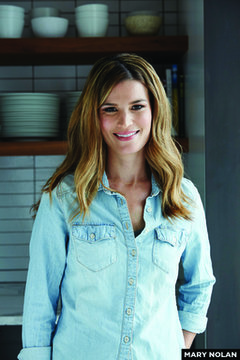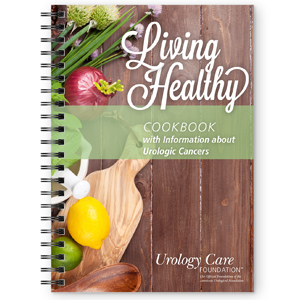
Get Healthy
This Summer!
The summer is an exciting time for vacations, warm sunshine and maybe a delicious frozen daiquiri in hand (if you are of legal age, of course). The summer is also a perfect time to rethink the things you do to stay healthy.
When you take conscious, mindful steps to create healthy habits – you’ll feel good. Research continues to show that certain things (you know what they are!) help us feel healthy, more energized and ready to have fun. The same habits also keep the urologic system working well now and into the future.
Let’s talk about a few.
Move that body
Dance, walk, bike, swim – all of it helps your body function the way it’s supposed to. The CDC recommends getting at least 150 minutes of exercise each week. That’s only about 22 minutes every day (but feel free to do much more). Use exercise as a chance to explore new places and have fun with friends. Exercise is not only critical for your heart, but it prevents disease, helps your body digest food better, helps you sleep, helps release stress and keeps your urologic system regular.
Drink refreshing drinks
Sure! Indulge in a sweet, refreshing cocktail, soda or iced tea. At the same time, think about what your body needs. Water is – hands down – the most important drink to stay hydrated. Our bodies need about 8-10 cups of liquid to function well, with half of that being water. Not only will water help your urologic and cardiovascular system, it will help you maintain a healthy weight and make your skin look younger.
Eat mindfully
Sometimes we eat without thinking, especially when summer foods look great. But we may not feel so great after we’re done. Think about what you put in your mouth and whether it offers your body good nutrients and fiber. You’ll feel more energized and “lighter” when you eat fresh (not-processed) foods, and when you’re mindful about your meals.
Don’t forget to exercise your pelvic floor muscles!
Kegel exercises are done to strengthen and relax the pelvic floor muscles. These are the muscles that hold up your bladder and support the uterus and bowel (large intestine). Kegels help men and women who have problems leaking urine or stool (feces). They are done by tightening and releasing those important muscles. Try for 10x per day.
With all the great movement, eating and drinking you do– we hope you also get a relaxing summer-night’s sleep.
Heart-Healthy Black Bean Brownie Recipe
This comforting, nourishing soup recipe, courtesy of Chef Mary Nolan, has a mix of protein, vegetables and love. It can be made in advance and stored in the fridge to enjoy for up to 5 days later.

Chef Mary Nolan is a recipe developer, cooking instructor, host and enthusiastic eater. She is currently the Executive Chef at Bon Appétit magazine.
“You eat with all of your senses. Recipes curated by color will look beautiful and help you enrich your meals.”
Total: 50m | Prep: 10m | Serves: 16
Nutritional Information:
Serving Size: 1 brownie
117 calories, 16g carbs, 3g protein, 5.3g fat, 31mg cholesterol, 49mg sodium, 92mg potassium, 1.4g fiber, 11.4g sugar, 20mg calcium, 0.7mg iron
INGREDIENTS
(1) 15-oz can black beans, rinsed and drained
3 eggs
3 Tbsp flavorless oil (i.e. canola or sunflower)
1 tsp vanilla extract
¼ cup unsweetened cocoa powder
2/3 cup sugar
½ tsp baking powder
¼ tsp salt
½ cup semi-sweet chocolate chips (or desired amount)
PREPARATION
- Preheat oven to 350 degrees F (176 C)
- Rinse and drain black beans. Put into food processor and mix until thick paste.
- In a large bowl, mix together black bean paste, eggs, oil and vanilla extract.
In a separate bowl, mix together cocoa powder, sugar, baking powder and salt.
- Add dry ingredients to wet ingredients and stir in desired amount of chocolate chips.
- Grease an 8x8 inch baking pan and then place parchment paper inside.
- Pour in batter and bake for 30 to 40 minutes. Check after 30 minutes with a toothpick (the center may be a little gooey and that’s okay!). Cook for an additional 10 minutes for brownies that are more firm.
- Allow brownies to cool for 5-10 minutes before cutting.
Enjoy!!
Eating healthy may play a role in cancer prevention. Many cancers are linked to excess weight. Healthy eating also helps people during cancer treatment and recovery. Chemotherapy, surgery, radiation therapy and other cancer treatments can take a toll on the body. They may affect taste, smell, appetite and the ability to absorb nutrients from food.
If you or someone you love is dealing with cancer, talk with your doctor or care team about what is best to eat and drink during cancer treatments. They may refer you to a dietitian who can help you with your diet during and after treatments.
Here are some living healthy basics you can apply:
Stay Hydrated
Your body needs a certain amount of liquid to function well. This is called hydration. Water, fruits, vegetables, smoothies, some soups, decaffeinated tea and unsweetened drinks are some examples for how to keep hydrated.
Eat Healthy
When choosing foods, try reaching for whole fruits, vegetables, legumes (like peas or beans) and other low-calorie options. Consider eating whole grains instead of refined grains. For example, choose whole-grain bread, pasta and cereal instead of refined foods like pastries, white rice or sugary cereals.
Check Nutrition Labels
Learn what to look for on the label. The US Food and Drug Administration (FDA) requires food companies to provide certain information on the nutrition labels printed on food packages. Nutrition labels can be filled with useful clues. When you eat something from a box, bag or fast food restaurant, look for options with less sugar, salt and calories.
Commit to Exercise
A doctor-approved workout may strengthen your body, improve your hormone levels and the way your immune system works. Even a little exercise to keep active can make a difference.
Stop Tobacco Use
Tobacco can cause cancer. There are benefits to stopping tobacco use at any age. Talk to your doctor if you are having trouble quitting the use of tobacco.
Plan Ahead for Travel
Pack healthy snacks for long trips or doctor visits. Try packing a small cooler with hummus and vegetables or apples and peanut butter. Or keep it simple with whole-grain crackers or trail mix. When you eat out, try to choose salads or grilled items instead of fried foods. When grocery shopping on the road, look for low-fat prepared meals, salads or rotisserie chicken options.

Cookbook funding and support provided by Pfizer Oncology.
UrologyHealth.org | SUMMER 2022 | UROLOGYHEALTH extra